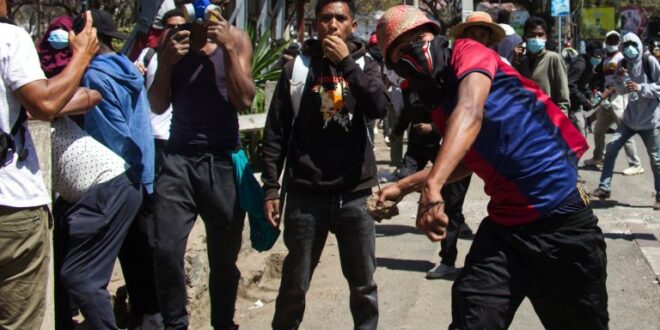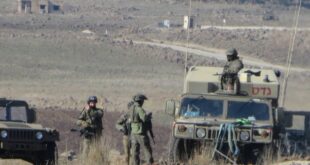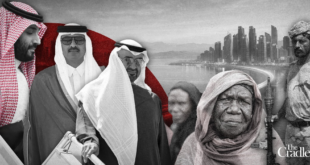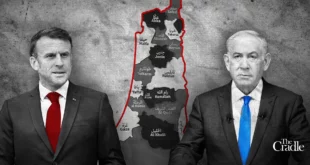Protests continued in Madagascar for a third week in a row, led by Generation Z—people born between the mid-1990s and early 2010s—inspired by protests and demonstrations elsewhere throughout the Global South, including in Nepal and Kenya, which are also plagued by political instability and economic fragility.
One of the drivers of protest throughout the Global South is rising socio-economic disparity and the concept of relative deprivation, which has been exacerbated by emerging technologies, higher levels of connectivity, and other trappings of globalization.
Like Madagascar, the protests in Morocco are driven largely by a youth movement animated by deeply entrenched inequality, high levels of corruption, rampant youth unemployment, and what Gen Z Moroccans view as misplaced government spending priorities.
Gen-Z-led protestors in Nepal railed against censorship, but were also motivated by socio-economic inequality, corruption, nepotism, political dysfunction, a lack of government accountability, and unfulfilled promises.
Protests continued in Madagascar for a third week in a row, led by Generation Z (“Gen Z”)—people born between the mid-1990s and early 2010s—inspired by protests and demonstrations elsewhere throughout the Global South, including in Nepal and Kenya, which are also plagued by political instability and economic fragility. There have also been protests this year, many of them catalyzed by Gen Z, in Indonesia, Morocco, Peru, and the Philippines. The protests in Madagascar, which occurred in cities across the country, especially in the capital, Antananarivo, have centered on a litany of grievances, including power outages and water shortages. Madagascar is one of the poorest countries in the world, despite robust mineral wealth, biodiversity, and agricultural land, and corruption remains rampant. Protesters have been killed and injured (the Madagascar government denies this), and last week the country’s president, Andry Rajoelina, recently named army General Ruphin Fortunat Zafisambo as prime minister, a week after dissolving the government. Over the weekend, some of the Army’s troops joined the protesters, and the president fled his residence, leading many to suggest that a coup was underway in the country.
One of the drivers of protest throughout the Global South is rising socio-economic disparity and the concept of relative deprivation, both exacerbated by emerging technologies, higher levels of connectivity, and other trappings of globalization. These protest movements are not just youth-led but also highly decentralized and coordinated via social media, with some similarities to the Arab Spring protests in the early 2010s which went on to topple longstanding governments across North Africa and the Middle East. It remains to be seen whether the current wave of Gen-Z protests will spread, as did the Arab Spring, and whether disillusioned youth, unhappy with corruption among ruling elites, will continue to serve as the primary driving force of these protests.
Beginning in late September, protests have swept across Morocco, from big cities to smaller towns, villages, and even rural areas. Several deaths have been reported, with accusations of mass arrests by security forces and the use of excessive force. Protesters have called for the resignation of the country’s prime minister, Aziz Akhannouch. Like Madagascar, these protests are primarily driven by a youth movement animated by deeply entrenched inequality, high levels of corruption, rampant youth unemployment, and what Gen Z Moroccans view as misplaced government spending priorities. For example, a major complaint is that the government (Morocco is a monarchy) is spending money on preparations for the 2030 World Cup rather than using those funds to improve the quality of life for the country’s citizens. The government has reportedly spent upwards of $5 billion to prepare for the 2030 World Cup, which Morocco is co-hosting along with Spain and Portugal. One of the slogans of the protesters is “We want hospitals, not stadiums.” Gen Z protesters are angry that the government is willing to invest in modern stadiums and ambitious infrastructure projects, while ignoring more basic necessities for the population and the provision of services. Morocco’s underinvestment in its public health system was brought to the forefront when eight women died after going to a public hospital while receiving caesarean section operations. These deaths sparked the ongoing protests.
In Nepal, protests began in early September after the government blocked more than two dozen social media platforms, including Facebook, Instagram, YouTube, X, and Snapchat. The younger generation railed against the censorship, but the protests were also motivated by socio-economic inequality, corruption, nepotism, political dysfunction, a lack of government accountability, and unfulfilled promises. As with protests in Madagascar and Morocco, the protests were organized digitally, and the movement is largely decentralized. Gen Z Nepalis coordinated over Discord, Viber, and TikTok. On September 8, protesters attempted to storm the federal parliament in the country’s capital, Kathmandu. The next day, the prime minister resigned and an interim government took office. The social media ban was also overturned, but it was not enough to assuage protesters who, in scenes similar to what occurred in Sri Lanka in the summer of 2022 and in Indonesia in early September, ransacked government buildings and political residences. Security forces responded with a heavy hand, using rubber bullets, water cannons, tear gas, and in some cases, live ammunition. Reports of the death toll vary, with numbers ranging from 19 killed to a higher estimate of 72 people killed, and another 2,100 injured.
As aforementioned, Kenyan protests served as an inspiration for other widespread movements throughout the Global South, and like those protests, the demonstrations in Kenya were largely youth-driven, leaderless, and coordinated over social media platforms. The protests were in response to longstanding concerns about police brutality and the excessive use of force by the security forces, but also related to the rising cost of living, economic hardship, perceptions of government corruption, and a general lack of accountability. There was also lingering resentment over last year’s Finance Bill protests, which began in response to an increase in taxes on fuel and other goods.
 Eurasia Press & News
Eurasia Press & News



